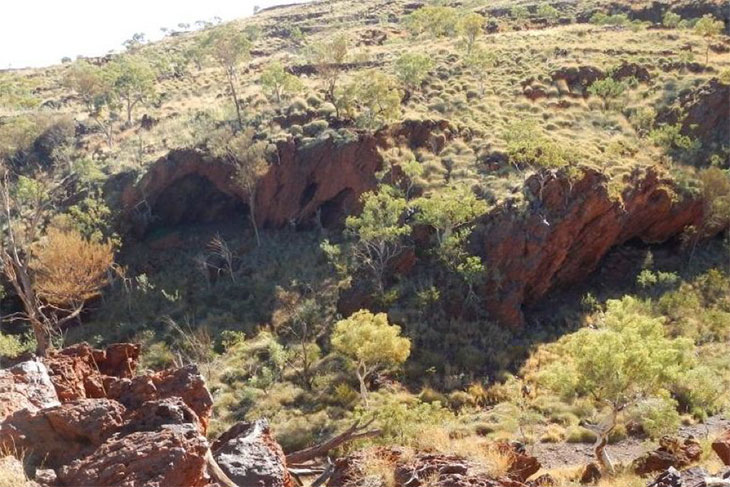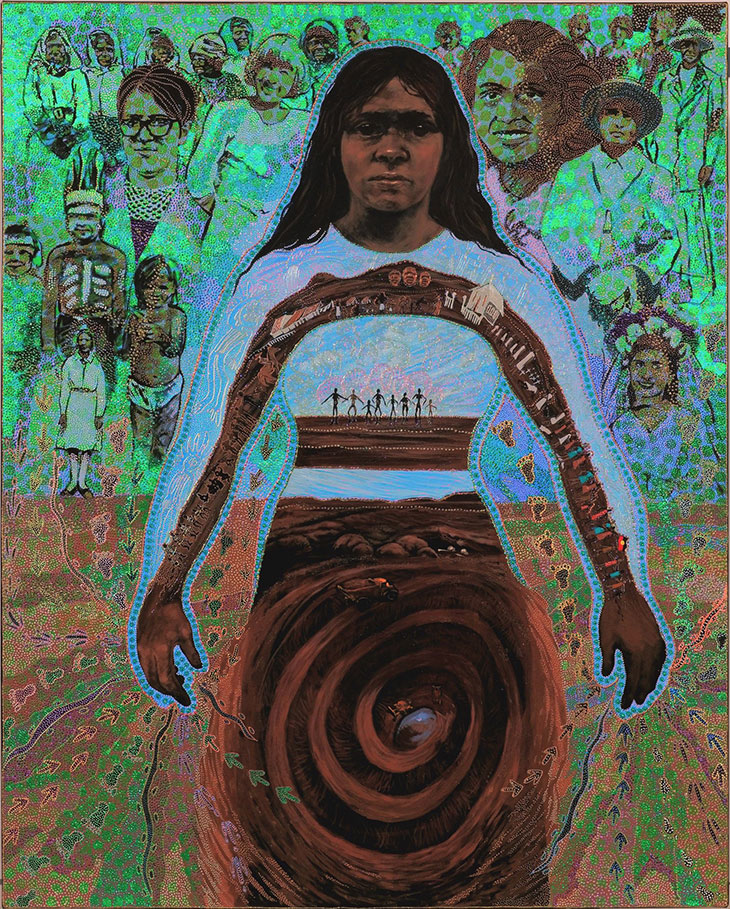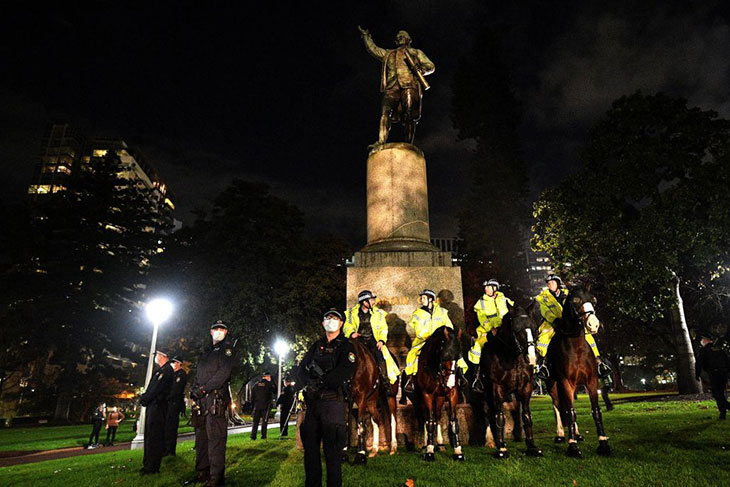On 24 May the multi-national mining company Rio Tinto, seeking to expand its iron ore mine in the Western Pilbara of Western Australia, blasted two ancient and sacred Aboriginal cave sections of the Juukan Gorge. Plans for the destruction of the caves – one of which contains evidence of human habitation dating back some 45,000 years – had been long in their gestation but, in the end, were abruptly and stealthily enacted. The site’s traditional owners learned of the blasts, which took place on the eve of the country’s National Reconciliation Week (27 May–3 June) only accidentally, when making plans for celebrations to be held there.
The site holds deep historical and cultural significance for its traditional owners, the Puutu Kunti Kurrama and Pinikura (PKKP). The caves also contain priceless archaeological evidence, as discovered during salvage digs conducted in 2014 after Rio Tinto was granted ministerial consent to destroy or damage the site. The team of archaeologists, led by Michael Slack, demonstrated through compilation and analysis of large lithic datasets, artefact data and the construction of what are termed geo-chronologies that at least one of the rock shelters was occupied from between 45,000 and 40,000 years ago. In short, these shelters are the only inland site in Australia whose contents show human occupation continuing through the last Ice Age.
The Juukan Gorge prior to the blasting. Photo: the Puutu Kunti Kurrama and Pinikura Aboriginal Corporation

It took Rio Tinto’s chief executive, Jean-Sébastien Jacques, some two weeks to issue an apology for distress caused by the destruction, in which he pledged full cooperation with an Australian government inquiry. ‘We are very sorry for the distress we have caused the PKKP in relation to Juukan Gorge and our first priority remains rebuilding trust with the PKKP,’ Jacques said in a statement. The company was later embarrassed by a leaked recording of a meeting in which Chris Salisbury, the iron ore chief executive, pointed out that the apology was not for the event itself, only the ‘distress caused’.
Perhaps the most difficult aspect of this tragedy, at the time of writing and while the pieces are still falling into place, is that the detonation of the site that took place was apparently completely legal. As long as the consent of the responsible minister is given under Section 18 of Western Australia’s Aboriginal Heritage Act, mining companies can do whatever they wish. In this case, permission was granted in 2013 by the then Minister for Aboriginal Affairs. Burchell Hayes, director of the PKKP Aboriginal Corporation and head of its Kurruma Land Committee, said following the discoveries made during the excavation in 2014 his organisation contacted the office of the federal minister for Indigenous Australians, Ken Wyatt, about the impending mining blast but was unable to stop it. Robert Eggington, the director of the Dumbartung Aboriginal Corporation, has confirmed that a number of groups are working to bring the case of Juukan Gorge to the International Court of Justice.
Mount Magnet (2001), Julie Dowling. On the back of the canvas is the following statement from the artist: ‘Mt. Magnet. This painting shows my great-grandmother Mary Latham (née Oliver) as the spirit of Mother Earth and the town of Mt. Magnet where we, as a family, put our claim in for Native Title (over Lake Moore) with other Badimaya families. Half the town is being mined for gold’.

Just as the news of the destruction of the caves in the Pilbara broke, anger over the death of George Floyd at the hands of police offers in Minnesota was reaching fever pitch across the globe. On 1 June, video footage came to light of an Indigenous teenager being kicked to the ground and arrested by a police officer in an inner Sydney suburb. News outlets began recirculating older footage of the death in custody in 2015 of David Dungay Jr, a young Indigenous man who, like George Floyd, uttered the words ‘I can’t breathe’ as he lay dying on the floor of Long Bay Goal in Sydney. Australia has one of the highest rates of black deaths in custody in the world. Since the 1991 Royal Commission there have been 434 deaths. First Nations people and their supporters were ready to take to the streets. Despite the fact that rallies were deemed illegal by the government because of a possible second Covid wave, large Black Lives Matter protests have taken place all over Australia.
Police guarding the statue of Captain Cook in Hyde Park during a Black Lives Matter protest in Sydney in June 2020. Photo: Saeed Khan/AFP via Getty Images

Several statues of prominent politicians have been defaced during the protests, including those of the former prime ministers Tony Abbott and John Howard in Ballarat in Victoria. More significant was the targeting of the statue of Captain Cook in Hyde Park in Sydney. The navigator from Yorkshire is a symbol among First Nations Australians of the taking of their land and the destruction of their culture. There are a large number of monuments to Cook across the country, but none so large in scale or commanding of attention as Thomas Woolner’s enormous bronze statue in Hyde Park, of the captain of the Endeavour gesturing towards the landmass of Australia as he was about to sail into Sydney Cove. Woolner, one of the founders of the Pre-Raphaelite Brotherhood, executed the sculpture in London in 1878. His bronze of Sir Stamford Raffles in Singapore was completed a decade later. During the rallies protesters sprayed the words ‘No Pride in Genocide’ in red paint across the sandstone plinth which is double the size of the bronze, lifting the monument towards the heavens in a spectacular celebration of British sovereignty.
In recent weeks there have been further attempts (so far postponed) to destroy more Indigenous sites in the Pilbara to extract iron ore, whose price is currently extremely high – at a time when Australia’s exports, heavily reliant on education and tourism, have been decimated due to the Covid-19 crisis. As is the case across the globe, minority communities are disproportionately affected. Australia’s remote Indigenous-run art centres, for example, many of which do not receive any assistance from any government and have been closed to visitors, are in serious trouble. Greater awareness of the conditions in which Indigenous Australians has led to some generous donations in some cases, such as to the Anangu-run Maruku Arts at Uluru, but more is needed. It seems unlikely that the governments, who have been so vocal about the ‘destruction’ of statuary while remaining largely silent about the destruction of sacred and ancient First Nations sites, will be the ones to step in.


